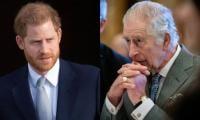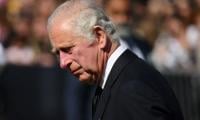The message from the US is clear: you do what is being asked, or we do it without you in the AfPak region. The US is to stay in Afghanistan to deny the Taliban a “military victory” and wants Pakistan to coerce them into negotiations while keeping Islamabad on a tight leash of a “condition-based” transactional relationship as opposed to Pakistan’s strategic wish-list.
Mostly listening to Pakistan’s civil and military leadership during his visit to Islamabad last week, US Secretary of State Rex Tillerson was quite brief and business-like: you are to undertake “certain tasks” and “address some very legitimate concerns”; you are free not to do that and the US will adjust its plans and “deal with it ourselves”. Without going into the controversy of where terrorist sanctuaries are, Tillerson now awaits information in the coming months from Islamabad about the whereabouts of ‘wanted terrorists’ on this or that side of the AfPak border – to eliminate them, with or without Pakistan’s participation.
This is a ‘conditions-based’ strategy, as is the US-Pak relationship. Tillerson, however, did ask: “how can we lower the tensions on the border with India”. And he did take up the issue unambiguously with the Indian leadership, while emphasising the Indian role in Afghanistan and in the larger context of Indian Ocean-Pacific region. Such is the culmination of the Pak-US partnership in the war on terror since 9/11 – a great ‘downgradation’ of an otherwise ‘non-Nato ally’.
Summing up the whole scenario, and the US secretary of state’s visit, senior US diplomat Alice Wells said that over the last four years Pakistani officials and the Taliban were “hedging against a chaotic departure” of US forces; “what the (Trump’s) South Asian strategy gives them is certainly that we are there, we are not going to let the Taliban win; that we are prepared to invest the resources that will be, at a minimum, (keep) a stalemate– but a stalemate increasingly in the government’s favour” in Kabul. She expects Pakistan to show “the same strategic commitment brought against other militant groups, whether they are operating (from) or have used Pakistan’s territory, whether are directed against India or directed against Afghanistan”. Pakistan’s response: it remains a partner in the war against terrorism and is ready to act on actionable intelligence, but is not ready to fight the Afghan war on Pakistani soil; it also takes serious exception to India’s military role in Afghanistan.
The US has been consistently de-hyphenating US-Pak and Indo-US relationships since President George Bush’s time and it has now taken the full turn in favour of US-India strategic partnership, resulting in a realignment of forces mainly against China and partly but crucially at the expense of what Pakistan continued to assume as its strategic interest in the hope that the tail could wag the dog. If at all Pakistani strategists were expecting and hedging on a hasty US exit, this possibility seems to have eluded them for a foreseeable future. Hence, a recalibration of Pakistan’s Afghan strategy is in order. The Americans’ wish to find a way out of the Afghan quagmire by using Pakistan’s good offices was dashed by the resurgent Afghan Taliban who preferred to wait for the US exit after the drawdown of troops by President Obama and Trump’s disdain for continuing the war in Afghanistan. With the physical elimination of IS or Daesh from the Iraq-Syria theatre, the focus is shifting to Afghanistan to not let it again become a bastion of terrorists with a global outreach.
Anticipating the changing strategic scenario, COAS Gen Qamar Javed Bajwa continued to vow not to let Pakistan territory’s be used for terrorism against any other country; and Operation Raddul Fasaad resolved not to discriminate between various hues of terrorists. Yet, Pakistan continued to be blamed for being soft on the Afghan Taliban and the ‘good Taliban’. And, whatever the reality, Pakistan’s diplomatic isolation was completed with the Brics declaration which included China. Paradoxically, this was the international isolation that former prime minister Nawaz Sharif had desperately tried to wriggle out of – for which he had to pay heavily with the Dawn leaks affair. Incidentally, neither do the Afghan Taliban anymore need a sanctuary here, nor does the indigenous struggle of the Kashmiris need the notoriety of being associated with ‘foreign jihadis’.
Sensing the emerging US-India alignment in Afghanistan, Gen Bajwa in his Defence Day speech offered talks to India, which instead chose to keep the pressure on at the LoC. On his visit to Kabul on October 1, during his discussion with President Ashraf Ghani on the renewal of the Afghanistan-Pakistan Transit Trade Agreement (APTTA), according to Suhasini Haider’s report in The Hindu, General Bajwa reportedly said: “ask the Indian side to speak to us and we will try and sort it out”. But, according to her, the India side responded by saying: “...APTTA is a bilateral agreement. It is not working because of unilateral decisions by Pakistan not to honour it. So how can India-Pakistan talks fix it” – while conveniently ignoring the third-party benefit India were to avail under the garb of a bilateral agreement.
Instead of backing Gen Bajwa’s reported offer, President Ashraf stopped Pakistani trucks’ entry into Afghanistan, and conditioned Pakistan’s access to Central Asia on a two-way access to Afghan-India transit trade while jeopardising the US-backed CASA electricity projects. When Commander Southern Command Gen Aamir Riaz had offered India to join CEPC in conjunction with China’s readiness to intertwine the Chahbahar and Gwadar ports, both the US and India were adamant in letting CPEC becoming an all-inclusive corridor. India is taking the long route of Chahbahar to reach Afghanistan, which doesn’t make much economic sense and doesn’t fit into President Trump’s tirade against Iran and the nuclear deal the world powers had signed with it.
Now Pakistan has to weigh its options. While continuing the unfinished business of clearing all militant remnants from our soil, doesn’t it suit us to pressurise the Afghan Taliban to come to the negotiations table with an open mind? As the US and Afghanistan heavily depend on Pakistan to keep the ‘stalemate’ in favour of the Afghan government, shouldn’t we utilise this leverage to build bridges with both as we cannot substitute the externally-driven stability of Afghanistan, nor can we afford a takeover of Kabul by the Taliban? After having lost our ‘strategic-depth’ notions, and with the expiry of the utility of so-called ‘strategic non-state actors’, we must take intelligently calibrated measures to mend our fences with both Afghanistan and the US. At the same time, to frustrate India’s efforts to open a second front from our north-western backyard, we must take a peace offensive towards India with the endorsement of the US. But that requires a versatile political, diplomatic and strategic mind to do what is needed – and promptly – in our own interests.
The question is: are we left with such faculty after having demolished whatever civilian intelligence and craftsmanship we were left with – and when we even perceive our economic survival in terms of fourth-generation warfare? It’s the de-militarisation and de-Talibanisation of our mind that is needed the most – and what nobody really cares about.
The writer is a senior journalist. Email: imtiaz.safma@gmail.com
Twitter: @ImtiazAlamSAFMA















